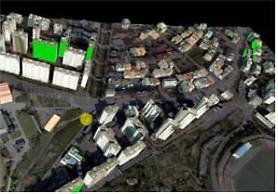
[Courtesy of the Agency for Defense Development]
In a five-year study that began in 2017, the Agency for Defense Development (ADD) said it has produced a prototype and verified its performance by leading the design of active and passive acoustic sensors. Underwater acoustic systems, both active and passive, listen to the ocean noise or interpret received echoes to improve the knowledge of biological activities or meteorological phenomena at sea.
ADD has performed the entire process of designing, manufacturing, testing, and verification with its own domestic technology. The agency said its technology can be used for the development of unmanned reconnaissance submarines. It can be applied to unmanned civilian submarines for undersea resource exploration and topographic surveys.
The active acoustic sensor transmits sound waves to detect underwater targets. It has the advantage of being optimized for unmanned submersible applications because it is small and light compared to existing sensors and enables high-power broadband sound transmission with low power.
The passive acoustic sensor receives the echo sound of transmitted sound waves and the noise of the target itself. It has low noise and high sensitivity reception performance and can be configured in a large area. Passive acoustic instruments are able to listen to ambient noise on fixed or mobile platforms.
The combination of active and passive underwater acoustic methods could significantly contribute to the monitoring of the oceanic environment.
Copyright ⓒ Aju Press All rights reserved.



